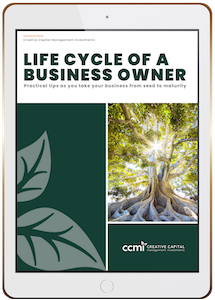Have you recently left a job or anticipate you’ll switch employers soon? Part of your exit checklist should include what you will do with your old 401(k) retirement account. Many factors will guide your choice, including your current and future investment options, convenience, and how you can maximize your savings. We’ve outlined the three methods you should consider to help make your transition less stressful.
Option #1 Take No Action
While you may simply not get around to it, there are other strategic reasons you may intentionally leave your funds where they are. For example, you may prefer your former employer’s 401(k) investment options or it may have lower fees. Leaving the plan where it is may result in the inconvenience of having more than one account to manage. You also run the risk of forgetting about the account altogether, something that encourages many people to move their funds to a place where they’re more easily monitored. A significant disadvantage of not taking any action with your old 401(k) is that you can no longer contribute to that account once you’ve left the company. You could potentially miss out on valuable growth if this old 401(k) is forgotten about and you fail to monitor the investments in the account.
Option #2 Roll it Over Into Your New Employer’s 401(k)
You may find keeping your funds in one account will be easier for you to manage over time. If your new employer offers a 401(k) plan, it may be beneficial to determine if it accepts 401(k) rollovers and if it has an investment menu with options you like. Once you decide you want to roll over your funds, your advisor or your new employer’s human resources representative should be able to help you with the transaction. Keep in mind, performing a rollover shouldn’t trigger any early withdrawal fees if done correctly.
Option #3 Roll It Over Into an Individual Retirement Account (IRA)
There are a few reasons you might consider this option. With employer 401(k) plans, you’re usually limited to a menu of investment options designated by your company and you may have less control over how your assets are allocated. Your portfolio may also end up lacking diversification. An IRA can present additional investment opportunities and may even have lower expenses compared to your employer’s plan. If you choose to roll your old 401(k) into an IRA, you will need to open an IRA that corresponds to the type of 401(k) account in which you were initially contributing to—for example, traditional pre-tax, Roth, or possibly both.
Job transitions are exciting, but may also come with questions about the most efficient and strategic way to continue planning and saving for your retirement years. The various ways to manage your old 401(k) have pros and cons you should evaluate closely before making a decision. A financial advisor can help you navigate your options to fit your situation, investment preferences, and retirement goals. If you would like to discuss how to reach your ideal retirement scenario, please contact us, and we’d be happy to assist.
CCMI provides personalized fee-only financial planning and investment management services to business owners, professionals, individuals and families in San Diego and throughout the country. CCMI has a team of CERTIFIED FINANCIAL PLANNERTM professionals who act as fiduciaries, which means our clients’ interests always come first.
How can we help you?






